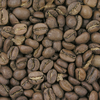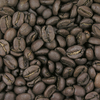As mentioned at the beginning, roasting of coffee is more art than science. Whenever roasters want to get the best result possible, they have to think about a lot of different factors.
The different roast levels of beans are referred to depending on the roasting temperature. The visual classification of the color is a common way to figure out how roasted a bean really is. During the roasting process, the beans change color – from yellow to darker browns.
In the later stages of roasting oil begins to appear on the surface of the beans. But judging only by sight isn’t always accurate enough, so temperature, smell, color, and sound of the beans are used together to control the roasting process. Noise is also a key indicator during the roasting process.
The roast profile is defined by temperature and roasting time. Temperature rise (when and how hot should I heat the beans) and temperature drop over time are the most important parts. This roast profile varies depending on the type of beans used and leads to different taste characteristics. The roast time (from small batch roasters) is between 15-30min. and takes place at temperatures between 180 and 250 ° C.
What flavors and traits of the coffee are brought out at the end depend a lot on the roast profile that the roasting master uses. Along with the roast profile, the taste is affected by the origin, type, and processing of the beans. In turn, these factors determine the type of roasting (along with the raw beans’ moisture, roast batch size, air flow, drum rotation, and cooling time). ).
There are two temperature limits which are referred to as “Cracks” which get special attention by roast masters:
The first Crack starts at 200–202 °C and sounds like popcorn popping (though a little quieter). The second Crack“ is reached at 224-226 ° C.
Roasting coffee beans is essential for developing the flavors that make a delicious cup of coffee. The roasting process not only changes the beans’ color but also their density taste, aroma, and acidity.
One of the most important factors in roasting is temperature. Roasting at the proper temperature is crucial to achieving your desired flavor profile. The optimal temperature depends on the roast level you want.
So what exactly is the best temperature for roasting coffee beans? Let’s take a closer look.
How Temperature Affects Roasting
Temperature is one of the most critical elements in roasting coffee. As the beans are heated they go through chemical changes that affect their final characteristics
-
Flavor – Higher temperatures intensify flavors and impart roastiness. Lower temperatures preserve delicate, fruity notes.
-
Aroma – Temperature brings out coffee’s aromatic oils and affects scent intensity.
-
Acidity – Temperature reduces acidity as the beans darken. Light roasts retain more acidity.
-
Body – Darker roasts roasted at higher temperatures have fuller body than light roasts.
-
Color – Temperature determines how dark the beans become, from light brown for light roasts to nearly black for dark roasts.
The key is finding the ideal temperature for the roast level you desire. Mastering temperature takes practice and a bit of trial and error. Let’s look at recommended temperature ranges.
Recommended Temperature Ranges
Here are the generally recommended temperature ranges for different roast levels:
- Light roast – 356°F to 401°F (180°C to 205°C)
- Medium roast – 410°F to 428°F (210°C to 220°C)
- Medium-dark roast – 437°F to 446°F (225°C to 230°C)
- Dark roast – 464°F to 482°F (240°C to 250°C)
These temperatures are for the environment inside your roasting machine where the beans are heated. Home roasting machines may not have a built-in thermometer, so you’ll need an infrared thermometer to monitor temperature.
Within each range, lower temperatures preserve more origin character while higher temperatures develop richer, roastier notes. Feel free to experiment to find your preference.
How to Achieve Optimal Temperature
Achieving an optimal, consistent temperature when home roasting coffee relies on a few key factors:
-
Use a thermometer – Don’t guess on temperature. Monitor it with a thermometer.
-
Preheat the roaster – Preheat for at least 5 minutes before adding beans.
-
Roast in small batches – Don’t overfill the roaster, allowing proper air circulation.
-
Keep records – Note roasting times, temperature profiles, and taste results to refine your process.
-
Make adjustments – If temperature climbs too high, lower the heat. If too low, increase heat intensity.
Signs of Under or Overheating
It’s essential to pay close attention throughout the roasting process to avoid under or overheating your beans:
Underheated signs:
- Roast takes too long
- Beans remain light colored
- Grassiness and sour notes in flavor
Overheated signs:
- Roast happens too quickly
- Beans are charred or burnt
- Bitter, ashiness notes in flavor
Use these indicators to modify your temperature as needed to achieve optimal results.
Roasting Tips for Different Bean Types
Certain coffee bean varieties are better suited for different roast levels based on their inherent flavors and densities.
For light roasts: Opt for beans from Ethiopia, Kenya, or Central America. Their fruity, floral notes shine through.
For medium roasts: Beans from Colombia, Sumatra, and Guatemala hold up well to fuller roasting.
For dark roasts: Try beans from Brazil, India, Indonesia for their richness. But you can dark roast almost any bean variety.
When switching bean types, you may need to adjust your roasting routine and temperatures accordingly.
Achieving Your Preferred Roast Profile
Many beginner roasters rightly focus on temperature, but there are other key variables that factor into your final roasted coffee’s taste and quality:
- Roast duration
- Airflow in the roasting chamber
- Quantity of beans
- Agitation or stirring
- Rate of heating
The art is balancing all these elements in harmony. Keep detailed logs and adjust each variable systematically until you nail down your perfect roast profile.
While reaching an optimal temperature is important, don’t overlook other critical roasting nuances. Mastering all the variables takes time and repeated practice.
Enjoying the Fruits of Your Labor
Home roasting coffee can be immensely satisfying. Starting with raw green beans and transforming them into custom roasted coffee tailored to your taste is rewarding.
Pay close attention to temperature and all the other roasting factors. Experiment, take notes, and adjust your methods accordingly. Before you know it, you’ll be consistently roasting incredible coffee bean batches in your home.
So have fun learning the roasting craft and discovering your ideal bean types and roast profiles. Part of the joy is the entire journey from green beans to that first sip of your home-roasted coffee.
Frequently Asked Questions
What temperature should I roast light roast coffee beans at?
For light roast coffee beans, aim for a temperature between 356°F and 401°F (180°C to 205°C). This lower temperature helps preserve the origin flavors.
What temperature should I roast dark roast coffee beans at?
For dark roast coffee beans, use a higher temperature between 464°F and 482°F (240°C to 250°C). This will produce a rich, darkly roasted flavor.
How do I know what temperature my home coffee roaster is at?
You’ll need to use a thermometer to monitor the temperature, as most home roasters don’t have a built-in thermometer. Use an infrared thermometer and aim at the beans through the roasting chamber.
What causes burnt or under-roasted coffee beans?
Burnt beans are caused by roasting at too high of a temperature. Under-roasted beans result from roasting at too low of a temperature or not roasting long enough.
How long should I roast coffee beans for?
Roast times vary based on the roast level, bean type, roaster capacity and other factors. Expect light roasts for 7-10 minutes, medium roasts for 8-12 minutes, and dark roasts for 10-20 minutes.
Should I preheat my roaster before roasting coffee?
Yes, it’s recommended to preheat your roaster empty for at least 5 minutes before adding in green coffee beans for roasting. This helps ensure an even, consistent roast.
How can I control the temperature when roasting coffee at home?
Use a thermometer to monitor it, make adjustments to the heat source, roast beans in small batches, and log your results. Controlling airflow can also help regulate temperature.

196 °C Cinnamon Roast
A very light roast level – immediately at first crack. Light brown color with prominent acidity

210 °C American Roast
Medium Brown – first crack. Slightly sweeter than light roast, full body with acidic notes

